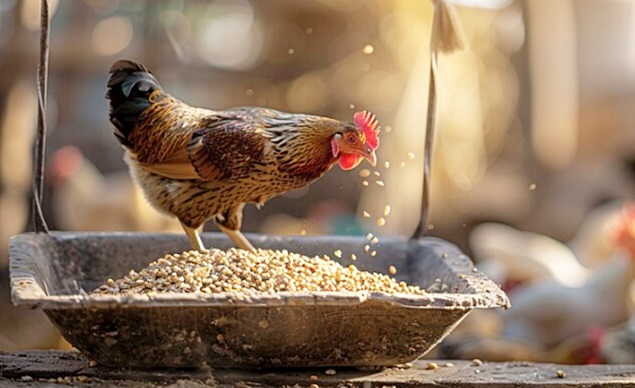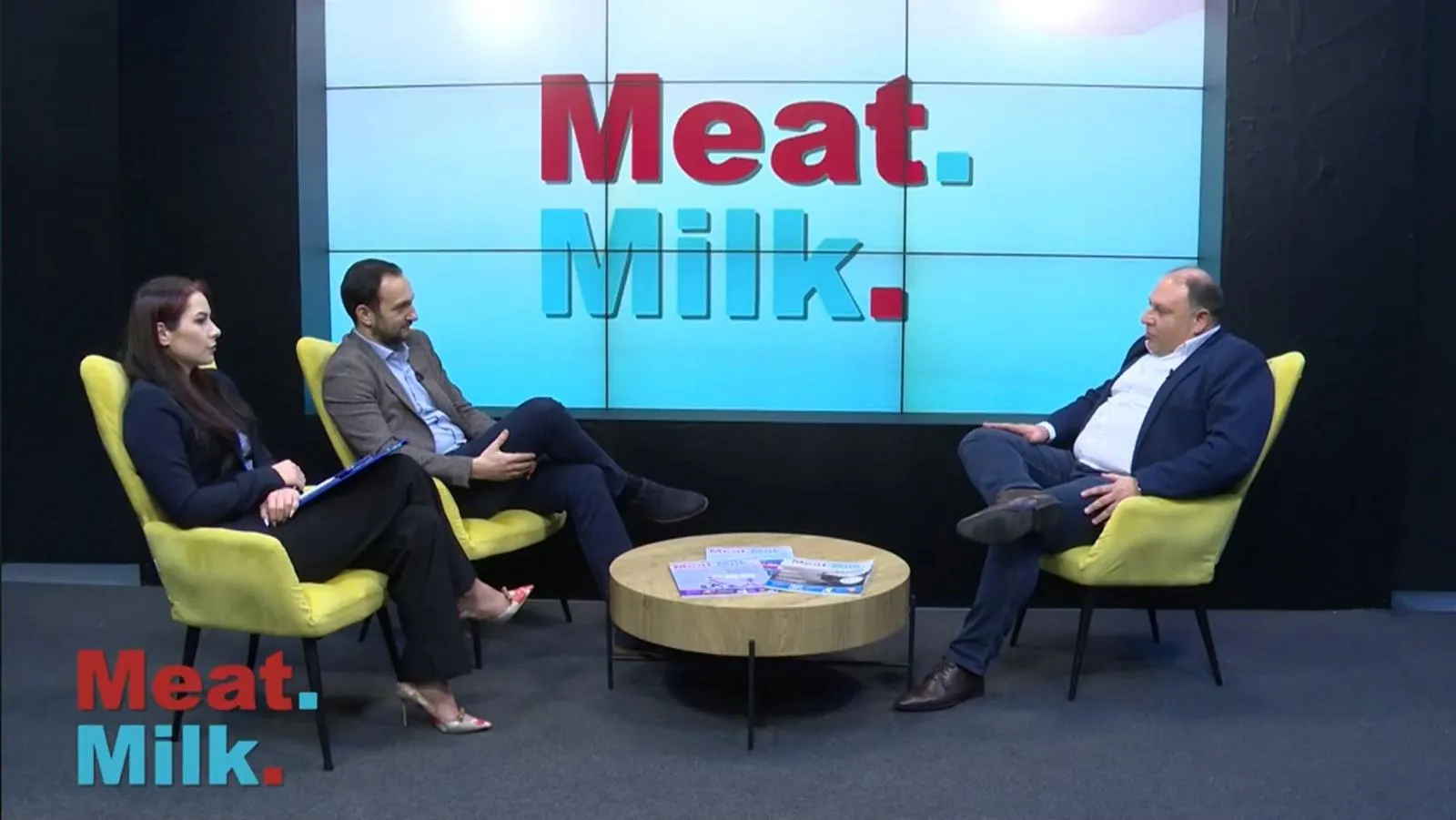
Feed Safety and Silage Hazards: Understanding the Risks in Animal Nutrition
Animal feed is a vital part of the food chain, directly affecting both animal health and welfare as well as human food safety. However, as highlighted in an analysis published by AllAboutFeed, there are numerous hazards that can lead to contamination of feed on farms.
Classification of Feed Hazards
Feed-related hazards are generally classified as biological, chemical, or physical. Biological hazards include bacteria, molds, viruses, prions, and parasites. In fact, feed can be a potential source of biological hazards, and particular attention has been paid to pathogenic bacteria.
Numerous studies and manufacturing protocols have been developed to control Salmonella—a zoonotic bacterium responsible for causing foodborne illnesses in both animals and humans. As living organisms, bacteria can multiply in feed.
Viruses, on the other hand, can potentially exist in feed but cannot replicate on their own. They require a suitable host to multiply and therefore do not reproduce in feed. Consequently, for many years, viral contamination of feed was not considered a priority in feed safety and quality management systems. However, feed is now recognized as a potential vector for the transmission of viruses to animals and humans.
With global feed production exceeding 1.1 billion tonnes annually, vast quantities of feed are transported across continents via transoceanic shipping. As a result, recent years have seen several outbreaks of viral diseases affecting not only farm animals but also broader livestock systems.
Notable examples include Foot-and-Mouth Disease (FMD), Newcastle Disease, Avian Influenza, Porcine Epidemic Diarrhea (PED), and African Swine Fever (ASF). While many of these viral diseases do not infect humans, they can severely impact animal health, food supply chains, and international trade.
The Risk of Live Animal Transit
One of the main pathways for the spread of animal viral diseases across borders is the transportation of live animals. During outbreaks, strict quarantine measures are enforced to control the movement of live animals and prevent the spread of disease within countries.
However, similarly strict controls have not been consistently applied to feed and feed ingredients. Many viruses that cause animal disease can remain stable in feed and feed components even during long-distance transport.
Recommendations to Prevent Viral Transmission via Feed:
- Prevent contamination from infected areas into clean zones.
- Integrate virus transmission prevention into national and international policies, on-farm biosecurity protocols, and feed safety management systems.
- Implement early warning systems for infected regions and countries.
- Government authorities should pay increased attention to potentially virus-contaminated feed, especially in international trade.
- Feed and ingredient suppliers should consider the health status of the country or region of origin, along with price and nutritional value.
- Feed manufacturers should source ingredients only from non-infected areas.
- Consider banning imported feed and ingredients from infected zones or countries.
- Evaluate the use of antiviral treatments during feed manufacturing, including chemical treatments (such as organic acids, fatty acids, and essential oils), thermal processing, and legal fumigants to reduce or eliminate viral presence.
- Quarantine potentially contaminated materials before use to exceed the survival time of pathogens where feasible.
- Include virus risk mitigation protocols in feed safety systems and biosecurity plans for feed mills and livestock farms.
- Recognize that virus survival times vary across feed types—some pose higher risks. Risk assessment and classification models should guide feed usage.
- Vehicles delivering feed should be cleaned and disinfected effectively between deliveries to prevent cross-contamination.
- Use proper sampling and rapid virus detection methods in international feed trade.
Safety Issues for Workers in Silage Feed Operations
Silage production carries numerous risks that can cause serious injury or even death, threatening human life and safety. According to AllAboutFeed, the UK recorded 9.12 deaths per 100,000 agricultural workers in 2020—six times higher than the construction industry.
Strict safety measures must be implemented to ensure all workers understand the hazards associated with silage operations.
Harvesting Crops for Silage
Producers should avoid harvesting during unfavorable weather conditions, especially when working with crops like corn, sorghum, small grains, or grass. Drought followed by heavy rain, as well as frost and hail damage, can lead to increased nitrate uptake by plants, which in turn may result in the production of toxic orange silage gas. A waiting period of 4–5 days is recommended before harvesting.
Silage Safety
Silage piles should never be overfilled, as this increases the risk of tractor rollover during filling or packing. No one should ever enter beneath a sealed silage cover. As fermenting grass rapidly consumes oxygen beneath the cover, harmful gases such as carbon dioxide and carbon monoxide accumulate. Entering under sealed covers risks fatal asphyxiation.
In tower silos, crops with less than 30% dry matter (DM) may produce silage effluent, which can generate toxic gases like hydrogen sulfide, posing a severe health hazard.
Effluent Management Strategies:
- Ensure effluent tanks are emptied before cutting silage.
- Inspect effluent tanks and drainage channels to ensure proper functioning.
- Check the silage slab for cracks or damage that may cause leaks.
- Seal any cracks or leak sources.
- Frequently inspect collection channels during assembly to prevent blockages.
- Monitor tanks hourly until effluent discharge ceases.
Personal Safety Measures:
- Never work alone near silos, bunkers, or piles—always have a colleague present.
- Wear high-visibility safety vests when operating near silage equipment.
- Maintain communication and visual contact with a partner stationed in a safe location.
- Avoid fatigue from long working hours, which can impair judgment and slow reaction times.
- Remain alert during night shifts; proper lighting is essential.
- Take extreme care near overhead power lines (10,000 volts or more) and train workers on hazard locations to prevent injuries and equipment damage.
- Children under 13 should never be allowed in tractors, forage harvesters, or anywhere near silage operations or equipment.
Machinery Operation:
- Ensure all machines are in safe operating condition, with guards and safety devices in place and functional.
- Securely attach all towed equipment to the tractor or transport vehicle.
- Always shut down machines before performing maintenance or clearing blockages.
- Properly support equipment before working underneath it.
- Secure all loads during transport.
- For night operations, ensure lights, mirrors, signals, and wipers are clean and fully operational.
- Confirm that tractor brakes and parking brakes function properly.
- Only competent drivers should operate machinery during silage season, and transporting passengers should be avoided.
Chemical Hazards in Silage Operations
Gas Exposure Risks
Various gases, including nitric oxide, are produced during the first 2–3 weeks of silage harvest and storage. Nitric oxide converts to nitrogen dioxide (NO₂) upon contact with air. When inhaled, NO₂ dissolves in lung moisture to form nitric acid, a powerful corrosive that damages lung tissue, cuts off oxygen intake, and can cause sudden death.
Prevention: Ensure proper ventilation and use of respiratory protection. Survivors of acute exposure should undergo medical monitoring.
Additive Safety
In the European Union, the European Food Safety Authority (EFSA) evaluates the efficacy and safety of all feed additives before they are authorized for use by the European Commission.
Safe Feed Storage Practices
Once silage is ready to be fed, storage structures can present serious safety hazards. The following precautions should be taken:
- Maintain a minimum distance from silage faces—stay at least three times the height away.
- Never drive or park near the feed-out face of a bunker or overfilled pile.
- When on a silage pile, stay at least 1.5 meters away from the feed-out face.
- Use proper unloading techniques, including cleaning the feed-out face thoroughly.
(Image: Freepik)





